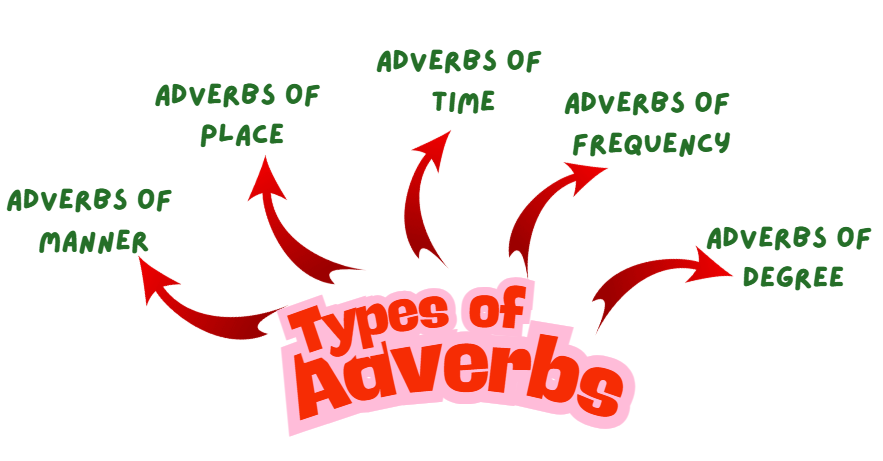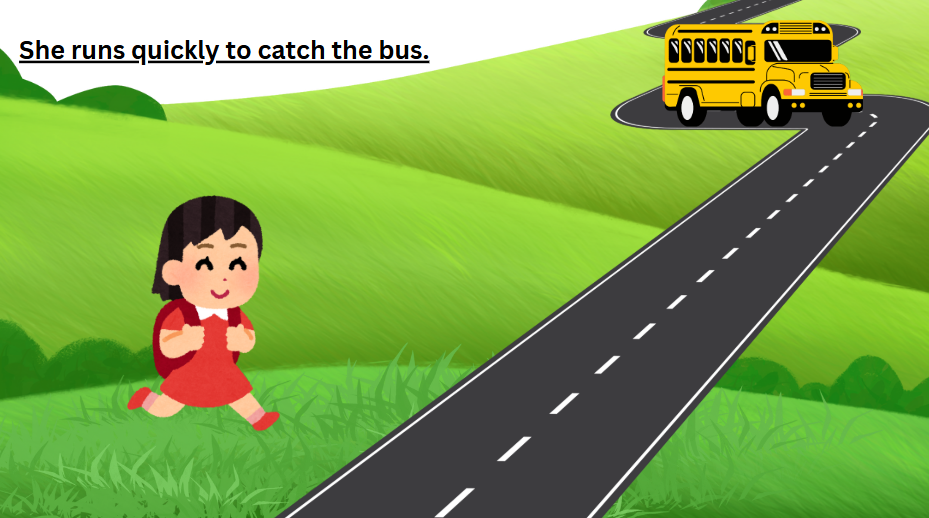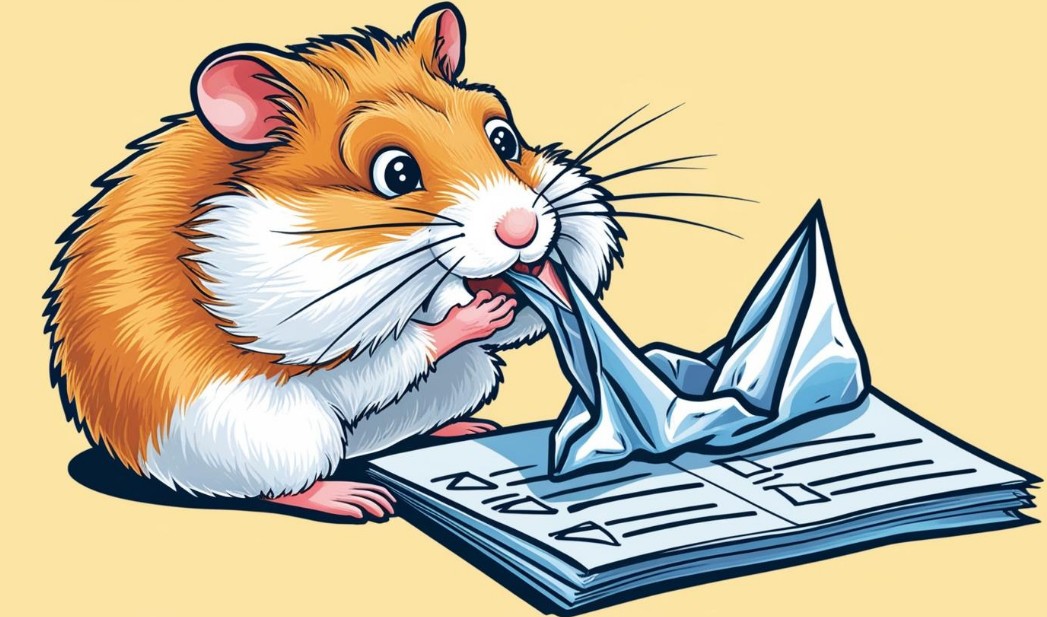Introduction to Adverbs
What is an Adverb?
An adverb is a word that describes or gives more information about a verb (action), an adjective (describes a noun), or even another adverb. It tells us how, where, when, how often, or how much something happens.

Examples of Adverbs in Sentences:
-
He runs quickly.
(The adverb "quickly" tells how he runs.) -
She sings loudly.
(The adverb "loudly" tells how she sings.) -
The dog is playing outside.
(The adverb "outside" tells where the dog is playing.) -
I will do my homework soon.
(The adverb "soon" tells when I will do my homework.)
Difference Between Verbs and Adverbs:
-
A verb is an action or something that happens.
(Example: run, eat, play) -
An adverb tells us how, where, when, how often, or how much the action happens.
(Example: quickly, here, soon)
Funny Example:
-
Verb: “The penguin danced.”
-
Adverb: “The penguin danced weirdly!”
(The verb is the action – the penguin is dancing. The adverb tells us how the penguin danced, which is in a weird way.)
Types of Adverbs:
1. Adverbs of Manner (How something happens)
Adverbs of manner describe how an action or event takes place. They provide insight into the way an action is performed. These adverbs often answer the question "How?" and can be used to describe both physical actions and non-physical actions like speaking or thinking.
-
These adverbs tell us how something is done.
-
Examples: quickly, happily, carefully, lazily
Funny Example:
“The snail moved slowly, because he was on a nap break!”
(This tells us how the snail moved, which is very slowly!)

Adverbs of Manner (How something happens)
Filled in the blanks for an adverb of manner (quickly, loudly, and as such).
-
The cat jumped ________ over the wall.
-
He answered the question ________, because he studied hard for it.
-
The clown danced ________ and made everyone laugh.
2. Adverbs of Place (Where something happens)
Adverbs of place explain where an action takes place. These adverbs answer the question "Where?" and further indicate the location of the action. Adverbs of place frequently suggest position, direction, or broad vicinity of an event.
-
These adverbs tell us where something happens.
-
Examples: here, there, everywhere, outside
Funny Example:
“The cookie was everywhere – in the kitchen, in the living room, and even under the couch!”
(This shows us where the cookie was.)

Adverbs of Place (Where something happens)
Fill in the blanks with the correct adverb of place (e.g., here, there, everywhere).
-
The puppy is running ________ in the garden.
-
I looked ________ , finding my favorite toy but couldn't find it.
-
We went ________ for a picnic by the lake.
3. Adverbs of Time (when something happens.)
The adverbs of time refer to the time when a situation occurs and how often it occurs. They answer the question "When?" and indicate the precise moment when a sequence of acts occurred. They refer to narrow points in time, span durations, or recurring intervals.
-
These adverbs tell us when something happens.
-
For Example-yesterday, now, soon, later
Funny Example:
“Santa Claus will visit us tomorrow, but only if we leave out the cookies!”
(This Means when Santa Claus is coming.)

Adverbs of Time (When something happens)
Fill in the blanks with the most suitable adverb of time (soon, yesterday, now).
-
I shall complete my homework ________, after dinner.
-
________ we had a snowstorm, but it melted quickly.
-
Let’s start the game ________, it’s getting late!
4. Adverbs of Frequency (How often something happens)
These adverbs give an idea of frequency of occurrence of actions or events happening. They are actually used to answer the question 'How often?' and help to express the routine of something or in the sense of consistency of actions being carried out.
-
These adverbs tell us how often something happens.
-
Examples: always, never, often, rarely
Funny Example:
“The hamster always tries to eat my homework. Maybe he’s a secret teacher!”
(This tells us how often the hamster does it – all the time!)

Adverbs of Frequency (How often something happens)
Fill in the blanks with the correct adverb of frequency (e.g., always, never, often).
-
I ________ forget to bring my lunch to school.
-
We ________ go to the park on weekends.
-
She ________ eats chocolate before bed.
5. Adverbs of Degree (How much or to what extent something happens)
Adverbs of degree describe how much or to what extent an action occurs. They give more detail about the intensity or extent of an action, adjective, or another adverb. These adverbs answer the question "How much?" or "To what degree?"
-
These adverbs tell us how much or how extreme something is.
-
Examples: very, too, quite, almost
Funny Example:
“I was so tired after running the race, I almost fell asleep in my cereal!”
(This tells us how tired the person was – really, really tired!)

Adverbs of Degree (How much or to what extent something happens)
Fill in the blanks with the correct adverb of degree (e.g., very, too, almost).
-
I am ________ excited for the weekend!
-
The cake is ________ sweet. I can hardly eat it!
-
I have ________ finished reading the book; just a few pages left.
Fun Facts:
Adverbs Can Modify Adjectives Too!
Adverbs don’t just describe verbs; they can also describe adjectives. It’s like adding more “oomph” to a description! For example, in “This cake is extremely delicious,” the adverb “extremely” describes how delicious the cake is.
The Word “Adverb” Comes from Latin!
The word "adverb" comes from the Latin word “ad” (meaning “to”) and “verbum” (meaning “word”). So, an adverb is a word that adds more to a verb! Cool, right?
CBSE Schools In Popular Cities
- CBSE Schools in Bangalore
- CBSE Schools in Mumbai
- CBSE Schools in Pune
- CBSE Schools in Hyderabad
- CBSE Schools in Chennai
- CBSE Schools in Gurgaon
- CBSE Schools in Kolkata
- CBSE Schools in Indore
- CBSE Schools in Sonipat
- CBSE Schools in Delhi
- CBSE Schools in Rohtak
- CBSE Schools in Bhopal
- CBSE Schools in Aurangabad
- CBSE Schools in Jabalpur
- CBSE Schools in Jaipur
- CBSE Schools in Jodhpur
- CBSE Schools in Nagpur
- CBSE Schools in Ahmednagar
- CBSE School In Tumkur











